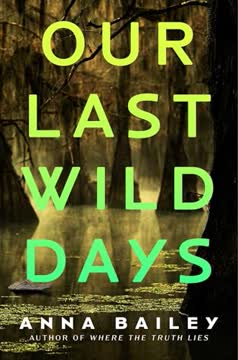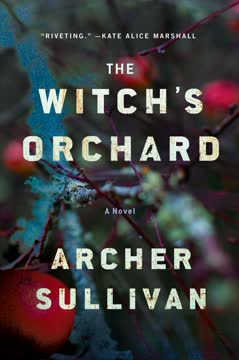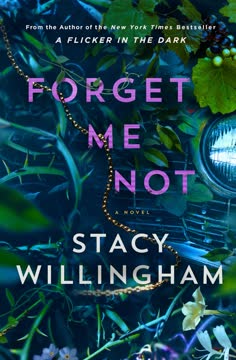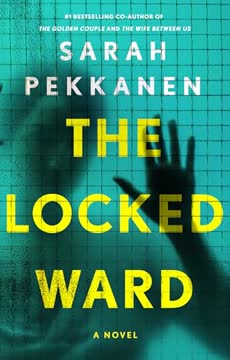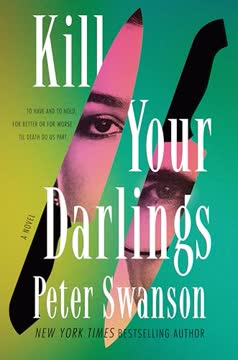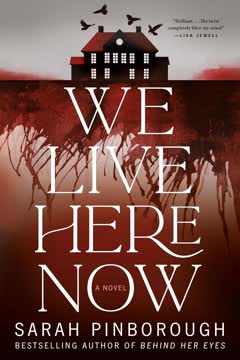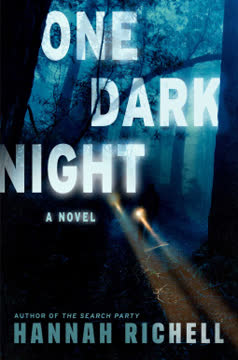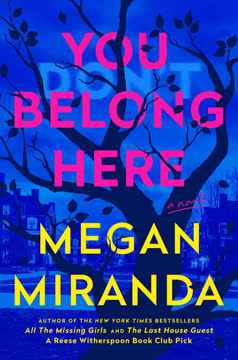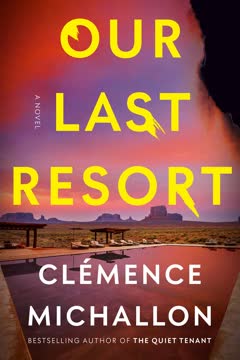Plot Summary
Girl Running From Shadows
A young girl bursts from the woods, running for her life down a lonely Louisiana road. The oppressive heat and the wild, tangled landscape press in on her, but she doesn't dare stop or look back. Her body is battered, her mouth full of grit, and her mind is a blur of fear and adrenaline. The road behind her is empty, but she keeps running, haunted by the sense that something terrible is just out of sight. This opening image sets the tone for a story where the wildness of the land mirrors the violence and secrets lurking in the hearts of its people. The girl's flight is both literal and symbolic—a desperate attempt to outrun the past and the dangers that have always stalked her family and her town.
Homecoming And Old Wounds
Loyal May, a journalist, returns to her rural Louisiana hometown of Jacknife after years away, summoned by her mother's declining mental health. The town is a patchwork of poverty, gossip, and decay, with memories lurking in every corner. Loyal's homecoming is fraught with guilt and unease—she left after a traumatic incident involving the Labasque family, her childhood friends, and has never truly reconciled with her past. Her mother, Rosa, is both welcoming and fragile, clinging to routines and old comforts while hiding her own fears. Loyal is forced to confront not only her mother's vulnerability but also her own sense of alienation, her body image, and the scars—physical and emotional—that Jacknife has left on her. The past is never far away, and Loyal's return stirs up old wounds for everyone.
Church Gossip And Threats
At a church bake sale, Loyal is thrust back into the web of small-town relationships and resentments. The church is both a social hub and a stage for judgment, where gossip about the Labasque family and Loyal's own history simmers beneath the surface. Loyal's old friend Cutter Labasque is the subject of whispered rumors—her family's violence, their isolation, and the infamous alligator attack that left Loyal scarred. When Loyal finds her car vandalized with the words "GATOR FOOD," it's clear that old grudges haven't faded. The town's collective memory is long, and Loyal's presence reopens questions about blame, betrayal, and the dangers that fester in places where everyone knows each other's secrets. The sense of threat is palpable, and the past feels dangerously close to repeating itself.
Body In The Bayou
News breaks that a woman's body has been found in the bayou, and the town's fragile equilibrium is shattered. Loyal, now working for the struggling local paper, is drawn into the investigation alongside Sasha Petitpas, a sharp-tongued young reporter. The crime scene is chaotic and unprofessional, with local deputies overwhelmed and the community crowding the banks for a glimpse of tragedy. The dead woman is soon identified as Cutter Labasque, Loyal's former friend. The shock of Cutter's death reverberates through Loyal, reigniting her guilt and unresolved feelings. The official story is that Cutter drowned, but Loyal and Sasha sense there's more beneath the surface. The bayou, with its hidden currents and lurking predators, becomes a symbol for the secrets and violence that run through Jacknife.
Crime Scene Tensions
Loyal and Sasha navigate the tense, insular world of Jacknife as they try to piece together what happened to Cutter. The sheriff's department is defensive and dismissive, eager to label the death an accident or suicide to avoid scandal. Loyal faces open hostility and fatphobic insults from deputies, while Sasha uses charm and subterfuge to gather information. The town's poverty, racism, and environmental decay are ever-present, shaping the lives and attitudes of everyone involved. As Loyal interviews witnesses and sifts through rumors, she's forced to confront her own complicity in the events that drove her and Cutter apart. The investigation is as much about understanding the town's sickness as it is about solving a crime.
Grief And Guilt Unspoken
Loyal is consumed by grief for Cutter and guilt over their estrangement. Memories of their intense, complicated friendship flood back—shared secrets, betrayals, and the fateful article Loyal wrote that exposed the Labasques' dysfunction to the whole town. The pain of unfinished business is overwhelming; Loyal can't shake the sense that she failed Cutter when it mattered most. Meanwhile, Sasha's own experiences as an outsider—queer, flamboyant, and often targeted—give him a unique perspective on the town's cruelty. Both are driven by a need for understanding and redemption, even as they realize that the truth may be more painful than they can bear. The emotional stakes rise as they dig deeper into Cutter's life and death.
Labasque Family Secrets
The Labasque family is a study in generational trauma and survival. Dewall, the eldest brother, is a volatile, intimidating presence—scarred by abuse and fiercely protective of his siblings. Beau, the youngest, is gentle but broken, numbed by addiction and grief. Their lives are shaped by poverty, violence, and the constant threat of the wild—both human and animal. Cutter was the glue that held them together, her toughness masking deep wounds. As Loyal and Sasha probe the family's recent history, they uncover evidence of escalating tensions, financial desperation, and dangerous entanglements with local criminals and white supremacist bikers. The Labasques' isolation has made them both victims and perpetrators, and the line between love and harm is blurred beyond recognition.
Swamp Whispers At Night
The bayou is alive with whispers and warnings. Locals report seeing masked figures in the woods, hearing strange whistles at night, and finding mutilated animals strung up as warnings. The legend of the rougarou—a shapeshifting swamp monster—haunts the community, a metaphor for the violence and madness that can overtake those who are cut off from others. Loyal and Sasha's nighttime investigations bring them face to face with these eerie phenomena, deepening their sense that Cutter's death is part of something larger and more sinister. The swamp is both a hiding place and a stage for ritualized violence, where the boundaries between human and animal, sanity and madness, are dangerously thin.
Missing Girls And Mothers
The case of a missing local girl, Marcie Bordelon, runs parallel to Cutter's death, highlighting the vulnerability of women and children in Jacknife. Loyal's mother, Rosa, is slipping further into dementia, her episodes of confusion and wandering echoing the town's collective amnesia and denial. The search for Marcie exposes the failures of law enforcement and the community's tendency to blame victims. Loyal's fear for her mother's safety and her own future is intertwined with her determination to find justice for Cutter. The theme of mothers and daughters—what is passed down, what is lost, and what can be saved—runs through every thread of the story.
Violence Under The Surface
As Loyal and Sasha close in on the truth, they encounter increasing resistance and danger. The sheriff's department is revealed to be corrupt, with deputies involved in drug trafficking and covering up crimes to protect their own. The white supremacist Ragnarok Boys, led by the menacing Greenacre, have infiltrated the community, exploiting its poverty and anger. Violence erupts—Sasha is brutally beaten by masked men, Dewall is shot, and Beau is coerced into attempting murder. The town's surface civility is a thin veneer over a roiling undercurrent of brutality, racism, and desperation. The cost of survival is high, and innocence is a luxury no one can afford.
Faith Healers And Fears
The arrival of a charismatic faith healer and her son, Isiah, adds another layer of complexity. Cutter's brief relationship with Isiah, and her desperate attempts to end an unwanted pregnancy, reveal the ways religion is used to control and shame women. The faith healer's revivals are both a source of comfort and a breeding ground for fanaticism and exclusion. Cutter's struggle for autonomy is mirrored in the town's broader battle between tradition and change, faith and reason, hope and despair. The church, once a place of community, is now a battleground for competing visions of salvation and damnation.
Drugs, Debt, And Danger
The Labasques' financial struggles have drawn them into the orbit of the Ragnarok Boys, who use the family's knowledge of the swamp to traffic drugs and evade the law. Beau's addiction makes him both a pawn and a liability, while Dewall's pride and rage blind him to the dangers closing in. Cutter's attempts to escape—by stealing money, seeking an abortion, and reaching out to Loyal—are met with betrayal and violence. The town's economic decline is both cause and effect of its moral decay, and everyone is forced to make impossible choices just to survive. The line between victim and perpetrator is blurred, and the cost of complicity is measured in blood.
Animal Masks In Woods
The discovery of animal masks, mutilated snakes, and other ritualistic signs in the woods points to a campaign of terror designed to keep people silent and afraid. The masked men are revealed to be both local deputies and Ragnarok Boys, working together to protect their criminal enterprise and punish anyone who threatens it. The use of animal imagery and folklore is a deliberate strategy to exploit the community's fears and superstitions, turning the swamp into a theater of menace. The violence is both random and targeted, a way of asserting dominance and erasing boundaries between human and beast.
The Sheriff's Motive
Sheriff Don Broussard's role in Cutter's death is gradually exposed. His obsession with Cutter, his resentment over his ruined football career, and his need to maintain control over the town drive him to violence. When Cutter rejects him and tries to assert her independence, he lashes out, killing her in a fit of rage and then orchestrating a cover-up with the help of his corrupt deputies. Broussard's actions are both personal and political—he is desperate to preserve his reputation and authority, even as the town unravels around him. The revelation of his guilt is both shocking and inevitable, the culmination of years of unchecked power and suppressed desire.
Betrayal, Blood, And Blame
The truth comes to a head in a series of violent confrontations. Beau, coerced by the Ragnarok Boys, is forced to choose between survival and conscience, ultimately turning on his tormentors to save his brother. Dewall, wounded and haunted by his failures, risks everything to protect what remains of his family. Loyal and Sasha, armed with evidence and determination, confront Broussard at the site of Cutter's death. The showdown is brutal and chaotic, with the swamp itself—embodied by a legendary white alligator—intervening in the final reckoning. The cycle of violence is broken, but not without cost. The survivors are left to reckon with their own complicity and the scars that will never fully heal.
Alligators And Reckonings
In the aftermath, the swamp reasserts its power. The white alligator, a symbol of both danger and redemption, claims Broussard, erasing the last trace of his authority. The Labasque brothers, battered but alive, begin the slow work of rebuilding—physically and emotionally. Sasha and Dewall find a tentative connection, forged in shared trauma and the recognition of each other's pain. Loyal, having finally told Cutter's story and made amends for her own betrayals, is left to care for her mother and contemplate the possibility of forgiveness. The town is changed, but the wildness remains—a reminder that survival is always uncertain, and that the line between civilization and chaos is perilously thin.
Storms, Survival, And Release
As a cleansing storm sweeps through Jacknife, the survivors gather the pieces of their lives. Loyal's mother finds community and a measure of peace, while Loyal herself learns to accept the limits of what can be saved. The town, battered by violence and loss, begins to heal in small, imperfect ways. The story ends with Loyal scattering earth from Cutter's grave into the creek, letting the current carry her friend's memory out to the wider world. The wild days are not over, but there is hope in the act of release—a recognition that, even in a place marked by pain and betrayal, love and resilience can endure.
Characters
Loyal May
Loyal is the emotional and moral center of the novel—a woman marked by physical and psychological scars, returning home to care for her ailing mother and confront the ghosts of her past. Her relationship with Cutter Labasque is the story's beating heart: a friendship forged in shared outsider status, shattered by betrayal, and haunted by unresolved love and guilt. Loyal's journey is one of self-examination and atonement; she is driven by a need to understand, to bear witness, and to make amends for the harm she caused. Her outsider status—due to her size, her intellect, and her time away—gives her both perspective and vulnerability. Loyal's development is a slow, painful reckoning with her own complicity, her longing for connection, and her capacity for forgiveness.
Cutter Labasque
Cutter is a force of nature—tough, sharp-tongued, and deeply wounded. Raised in violence and poverty, she is both protector and enforcer for her brothers, her strength masking profound vulnerability. Cutter's relationship with Loyal is complex: she is both friend and rival, confidante and betrayer. Her death is the novel's central mystery, but her presence lingers throughout, shaping the actions and emotions of everyone around her. Cutter's struggle for autonomy—against her family, her lovers, and the town's expectations—drives much of the plot. Her fate is a testament to the dangers faced by women who refuse to be tamed, and her memory is both a source of pain and a catalyst for change.
Dewall Labasque
Dewall is the archetypal wounded alpha—physically imposing, emotionally scarred, and fiercely loyal to his family. His upbringing was a crucible of abuse and deprivation, leaving him both a victim and a perpetrator of violence. Dewall's relationship with Cutter is fraught with love, resentment, and guilt; he is both her teacher and her tormentor. His alliance with the Ragnarok Boys is born of desperation, and his eventual stand against them is an act of both survival and redemption. Dewall's development is a slow, painful process of recognizing his own capacity for harm and his longing for connection. His bond with Sasha, tentative and unexpected, offers a glimmer of hope for healing.
Beau Labasque
Beau is the most vulnerable of the Labasque siblings—a sensitive soul numbed by addiction and grief. His love for Cutter is pure but powerless, and his dependence on Dewall is both a lifeline and a trap. Beau's journey is one of survival in the face of overwhelming odds; he is repeatedly victimized by those who exploit his weakness, but he retains a core of decency and empathy. His ultimate act of violence—turning on the Ragnarok Boys to save his brother—is both a breaking point and a moment of agency. Beau's fate is uncertain, but his struggle embodies the novel's themes of resilience and the high cost of survival.
Sasha Petitpas
Sasha is Loyal's partner in investigation and, in many ways, her mirror—a misfit marked by difference, targeted for his flamboyance and sexuality, but possessed of wit, courage, and a deep sense of justice. His relationship with his twin sister Kaylee and his great-uncle De Foret anchors him, but he is always on the edge of belonging. Sasha's attraction to Dewall is fraught with danger and longing, a connection forged in shared pain and the recognition of each other's wounds. Sasha's resilience in the face of violence and his refusal to be silenced make him a vital force in the story's quest for truth.
Don Broussard
Broussard is the embodiment of small-town power gone rotten—a man whose need for control, respect, and validation drives him to violence and cover-up. His obsession with Cutter is both personal and symbolic; she represents everything he cannot possess or tame. Broussard's complicity in Cutter's death and his manipulation of the investigation are motivated by a toxic mix of desire, resentment, and self-preservation. His downfall is both a reckoning and a release for the town, but the damage he has done lingers. Broussard is a study in the dangers of unchecked authority and the ways personal pathology can infect an entire community.
Rosa May
Rosa is Loyal's mother, a woman slipping into dementia and haunted by her own losses. Her decline is both a personal tragedy and a metaphor for the town's collective forgetting and denial. Rosa's moments of clarity and connection are precious but fleeting, and her vulnerability forces Loyal to confront the limits of what can be saved. The relationship between mother and daughter is tender, fraught, and ultimately redemptive—a reminder that love endures even as memory fades.
Greenacre
Greenacre is the leader of the Ragnarok Boys, a white supremacist biker gang exploiting the town's poverty and anger. He is charismatic, ruthless, and deeply manipulative, using violence and intimidation to maintain control. Greenacre's relationship with the Labasques is transactional and exploitative; he preys on their desperation and uses them as tools in his criminal enterprise. His presence in Jacknife is a catalyst for escalating violence and a symbol of the broader forces of corruption and decay at work in the region.
Isiah Black
Isiah is the son of a faith healer, marked by trauma and a sense of otherness. His brief relationship with Cutter is a lifeline for both, but ultimately he is unable to save her or himself. Isiah's struggle with faith, guilt, and the expectations of his mother mirrors the town's own battle between tradition and change. He is both a victim and a witness, his story a reminder of the limits of good intentions and the dangers of misplaced trust.
Chuck De Foret
De Foret is the editor of the Bayou Leader, a man shaped by loss, addiction, and a stubborn commitment to his community. He is both a father figure and a cautionary tale for Loyal and Sasha, offering guidance and protection but also embodying the compromises and failures of the older generation. De Foret's struggle to keep the paper—and the town's sense of itself—alive is a microcosm of the larger battle for survival and meaning in a place on the edge of oblivion.
Plot Devices
Interwoven Timelines And Perspectives
The novel employs a shifting narrative structure, moving between Loyal's perspective, Sasha's, and occasional glimpses into the minds of other key characters. This allows for a rich, polyphonic exploration of events, motivations, and emotional landscapes. The use of flashbacks and memories deepens the sense of history and trauma, while the present-tense urgency of the investigation keeps the plot taut. The interplay of voices also highlights the ways in which truth is contested, partial, and shaped by perspective—a central theme of the book.
Folklore And Superstition
The recurring motif of the rougarou and other swamp legends serves as both a literal and symbolic device. The animal masks, mutilated snakes, and ritualized violence are used by the antagonists to exploit the community's fears and enforce silence. At the same time, these stories reflect the characters' psychological states—their sense of being hunted, transformed, or consumed by forces beyond their control. The boundary between myth and reality is deliberately blurred, reinforcing the novel's themes of uncertainty and the wildness within.
Environmental Decay And Setting
The Atchafalaya Basin is more than a backdrop—it is a living, breathing force that shapes every aspect of the story. The heat, the water, the encroaching wildness, and the ever-present threat of alligators mirror the characters' internal struggles and the town's social decay. The setting is used to heighten tension, symbolize danger and possibility, and underscore the fragility of human attempts at order and control. The swamp's cycles of flood and drought, life and death, echo the novel's exploration of survival and loss.
Foreshadowing And Symbolism
The novel is rich in foreshadowing—early images of running, drowning, and predation anticipate later events. The white alligator, in particular, is a potent symbol of both danger and redemption, appearing at key moments to signal turning points in the narrative. The use of scars, both physical and emotional, as markers of history and identity reinforces the idea that the past is never truly past. The interplay of light and darkness, water and fire, further deepens the story's symbolic resonance.
Social Critique And Psychological Realism
The plot is driven by the interplay of personal trauma and broader social forces—poverty, racism, misogyny, and environmental neglect. The characters' choices are shaped by their circumstances, and the novel refuses easy answers or clear-cut villains. The psychological depth of the characters—their guilt, shame, longing, and resilience—grounds the story in emotional truth, even as the plot veers into violence and melodrama. The use of journalism as both a plot device and a metaphor for bearing witness underscores the importance of truth-telling in the face of denial and complicity.
Analysis
Our Last Wild Days is a searing exploration of the ways trauma, poverty, and systemic rot shape the lives of individuals and communities. Anna Bailey uses the conventions of crime fiction and Southern Gothic to probe the blurred boundaries between victim and perpetrator, love and harm, civilization and wildness. The novel's central mystery—who killed Cutter Labasque?—is ultimately less important than the emotional and social reckoning it demands. Through its interwoven voices and vivid setting, the book examines how secrets fester, how violence is both inherited and inflicted, and how the longing for connection can both save and destroy. The swamp is both a literal and metaphorical landscape of danger and possibility, where survival requires both toughness and tenderness. The story's resolution is hard-won and incomplete; justice is messy, healing is uncertain, and the wildness within and without can never be fully tamed. The novel's greatest strength lies in its refusal to offer easy redemption, insisting instead on the necessity of bearing witness, telling the truth, and finding hope in the act of release.
Last updated:
Review Summary
Our Last Wild Days is a captivating Southern Gothic mystery set in Louisiana. Many readers praised the atmospheric writing, complex characters, and slow-burn plot. The story follows Loyal May as she investigates her estranged friend's death in their small hometown. While some found the pacing slow, most appreciated the vivid depiction of bayou life and the exploration of themes like poverty, addiction, and redemption. The novel's ending surprised many readers, and the characters' flaws and development were widely commended. Overall, it's a highly atmospheric and emotionally resonant read.
